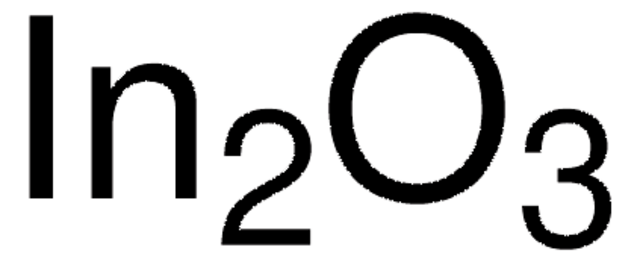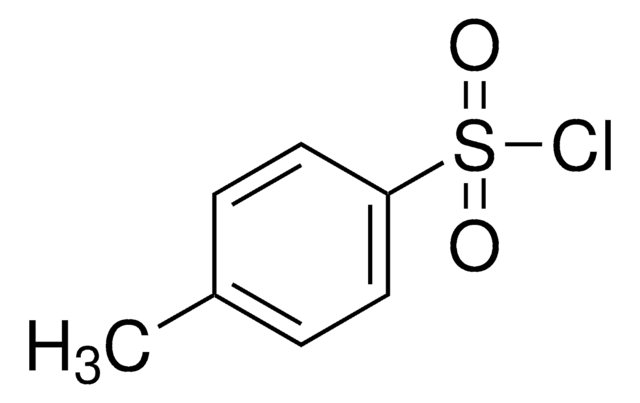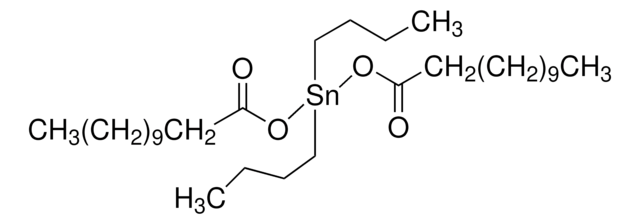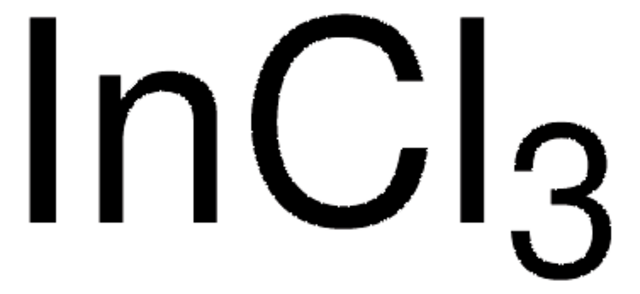203424
Indium(III) oxide
99.998% trace metals basis
Synonym(s):
Diindium trioxide, Indium sesquioxide
Sign Into View Organizational & Contract Pricing
All Photos(3)
About This Item
Empirical Formula (Hill Notation):
In2O3
CAS Number:
Molecular Weight:
277.63
EC Number:
MDL number:
UNSPSC Code:
12352303
PubChem Substance ID:
NACRES:
NA.23
Recommended Products
vapor pressure
<0.01 mmHg ( 25 °C)
Quality Level
Assay
99.998% trace metals basis
form
powder
reaction suitability
reagent type: catalyst
core: indium
density
7.18 g/mL at 25 °C (lit.)
application(s)
battery manufacturing
SMILES string
O=[In]O[In]=O
InChI
1S/2In.3O
InChI key
SHTGRZNPWBITMM-UHFFFAOYSA-N
Looking for similar products? Visit Product Comparison Guide
Application
- Synthesis and Characterization: The development of gold nanoclusters on the surface of tin and indium oxide films, synthesizing new materials for advanced applications (Korotcenkov et al., 2014).
- Photocatalysis: Using nitrogen/sulfur-codoped carbon-coated indium oxide nanoparticles as excellent photocatalysts, providing insights into environmental and energy applications (Sun et al., 2019).
Storage Class Code
11 - Combustible Solids
WGK
WGK 3
Flash Point(F)
Not applicable
Flash Point(C)
Not applicable
Personal Protective Equipment
dust mask type N95 (US), Eyeshields, Gloves
Choose from one of the most recent versions:
Already Own This Product?
Find documentation for the products that you have recently purchased in the Document Library.
Customers Also Viewed
Huimeng Wu et al.
Journal of the American Chemical Society, 133(36), 14327-14337 (2011-08-11)
This Article reports a mechanistic study on the formation of colloidal UO(2)/In(2)O(3) and FePt/In(2)O(3) heterodimer nanocrystals. These dimer nanocrystals were synthesized via the growth of In(2)O(3) as the epitaxial material onto the seed nanocrystals of UO(2) or FePt. The resulting
Xiaoyun Li et al.
Environmental science & technology, 46(10), 5528-5534 (2012-04-12)
Perfluorooctanoic acid (C(7)F(15)COOH, PFOA) has increasingly attracted worldwide concerns due to its global occurrence and resistance to most conventional treatment processes. Though TiO(2)-based photocatalysis is strong enough to decompose most organics, it is not effective for PFOA decomposition. We first
Xuming Zou et al.
ACS nano, 7(1), 804-810 (2012-12-12)
In recent years, In(2)O(3) nanowires (NWs) have been widely explored in many technological areas due to their excellent electrical and optical properties; however, most of these devices are based on In(2)O(3) NW field-effect transistors (FETs) operating in the depletion mode
Ariel Amir et al.
Proceedings of the National Academy of Sciences of the United States of America, 109(6), 1850-1855 (2012-02-09)
Slow relaxation occurs in many physical and biological systems. "Creep" is an example from everyday life. When stretching a rubber band, for example, the recovery to its equilibrium length is not, as one might think, exponential: The relaxation is slow
Di Chen et al.
Nanoscale, 4(10), 3001-3012 (2012-04-13)
With the features of high mobility, a high electric on/off ratio and excellent transparency, metal oxide nanowires are excellent candidates for transparent thin-film transistors, which is one of the key technologies to realize transparent electronics. This article provides a comprehensive
Articles
Self-Assembled Nanodielectrics (SANDs) for Unconventional Electronics
Our team of scientists has experience in all areas of research including Life Science, Material Science, Chemical Synthesis, Chromatography, Analytical and many others.
Contact Technical Service









